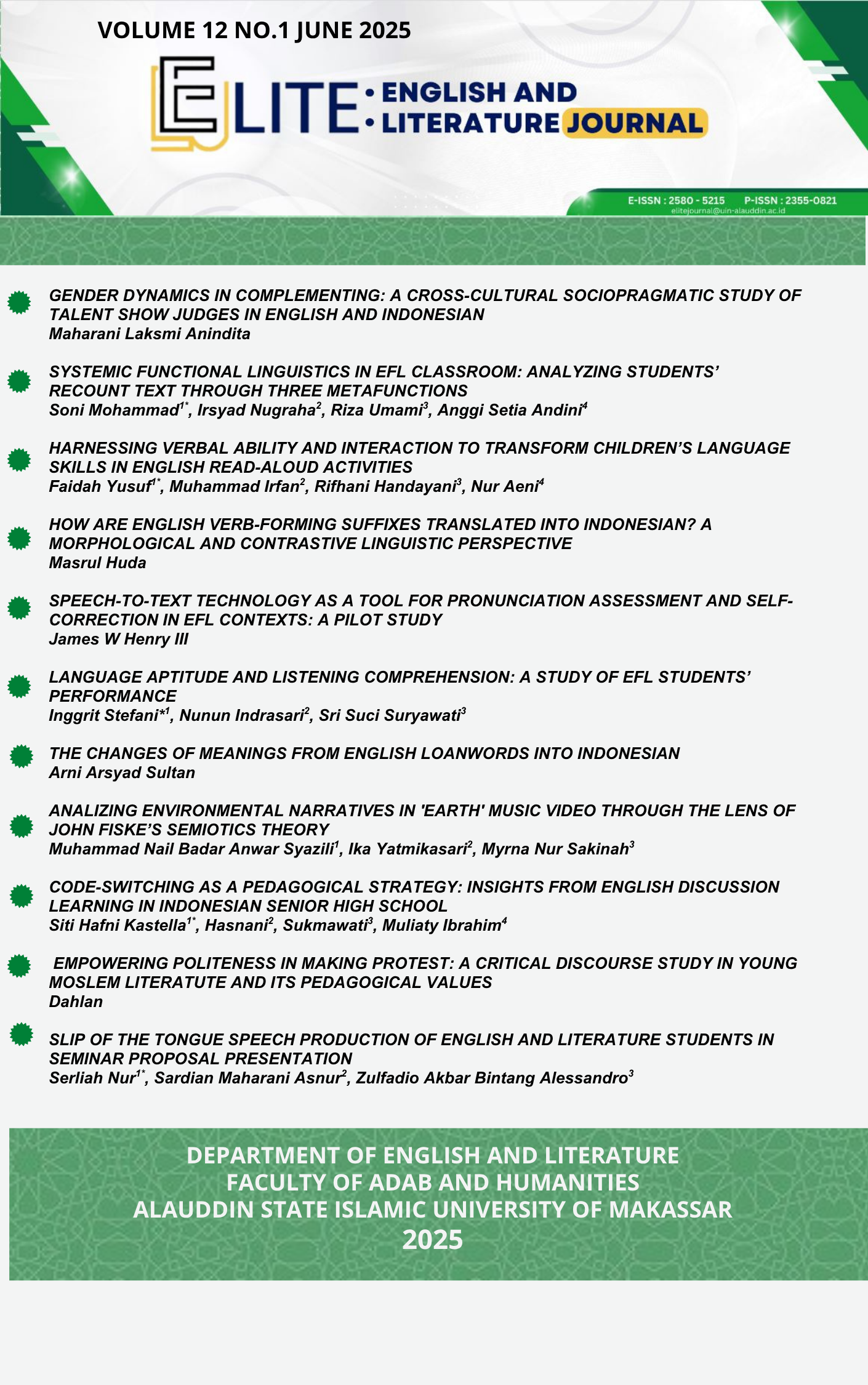THE CHANGES OF MEANINGS FROM ENGLISH LOANWORDS INTO INDONESIAN
Keywords:
Changes of meanings, Loanwords, Motives of using loanwordsAbstract
Language contact between cultures often leads to the borrowing of words. In addition, arbitrary characteristics of a language may affect to word absorption to another language. Unfortunately, word meaning could be changed from its original meaning and new meaning is created in another language. The research aims to identify the kind of semantic changes which occurred in English loanwords into Indonesian, to disclose the motives of the speakers in using English loanwords, and factors facilitating the semantic changes. The data is the direct utterances gained from daily informal situation among Indonesians located in Makassar, South Sulawesi. It was collected by using fieldwork research observation, questionnaire, and interview. Then, it is analyzed by employing qualitative and descriptive method. The finding reveals that there are six types of semantic changes of English loanwords into Indonesian which are widening or broadening meaning, narrowing meaning, meaning shift, metonymy, metaphor, and synecdoche. The speakers use those English loanwords because of some motives such as the need filling motive and prestige motive. There are also two factors facilitating the speakers in using those English loanwords in their daily life which are social factor and psychological factor.
Downloads
References
Anam, M. K., & Nirmala, D. (2019). Semantic Changes of English Loanwords in Radar Kediri Daily Newspaper Headlines. PAROLE: Journal of Linguistics and Education, 9(2), 80–89. https://doi.org/10.14710/parole.v9i2.80-89
Auer, P. (2020). Language Contact: Pragmatic Factors. The Routledge Handbook of Language Contact, February, 147–167.
Bloomfield, L. (1933). Language. In Language: Vol. 50 (2) (pp. 333–350). Compton Printing Ltd.
Buragohain, D., Talab Jafaar, S., & Haroon, H. A. (2019). Differences and Classifications of Borrowed and Loan Words in Linguistics Context: A Critical Review. International Languages and Knowledge - Learning in a Changing World, November, 95–112. https://www.researchgate.net/publication/337338157
Chojimah, N., & Widodo, E. (2021). The Borrowing Process of English Loanwords on Covid-19 in Indonesian. Humanus, 20(2), 183. https://doi.org/10.24036/humanus.v20i2.114420
Creswell, J. W. (2014). Qualitative and Quantitative Research Design. In Social Research Methodology. SAGE Publications. https://doi.org/10.4324/9781032624860-9
Creswell, J. W. (2015). Educational Research - Planning, COnducting, And Evaluating Quantitative and Qualitative Research - Fifth Edition (5th ed.). Pearson Education Inc.
Durkin, P. (2014). Borrowed Words: A History of Loanwords in English (First, pp. 1–31). Oxford University Press.
Erniti, E. (2006). Serapan Bahasa Asing dalam Bahasa Indonesia. Sosio Religia, 5(4), 1–16.
Fauzi, I. (2015). English Borrowings in Indonesian Newspapers. Journal on English as a Foreign Language, 4(1), 15. https://doi.org/10.23971/jefl.v4i1.71
Frazer, T. C., Fromkin, V., & Rodman, R. (1984). An Introduction to Language. In Language (Vol. 60, Issue 2). https://doi.org/10.2307/413657
Downloads
Published
How to Cite
Issue
Section
License
Copyright (c) 2025 arni arsyad

This work is licensed under a Creative Commons Attribution-NonCommercial-ShareAlike 4.0 International License.
Once an article was published in the journal, the author(s) are:
granted to the journal right licensed under Creative Commons License Attribution that allows others to share the work with an acknowledgement of the work's authorship.
permitted to publish their work online in third parties as it can lead wider dissemination of the work.
continue to be the copyright owner and allow the journal to publish the article with the CC BY-NC-SA 4.0 license
receiving a DOI (Digital Object Identifier) of the work.













